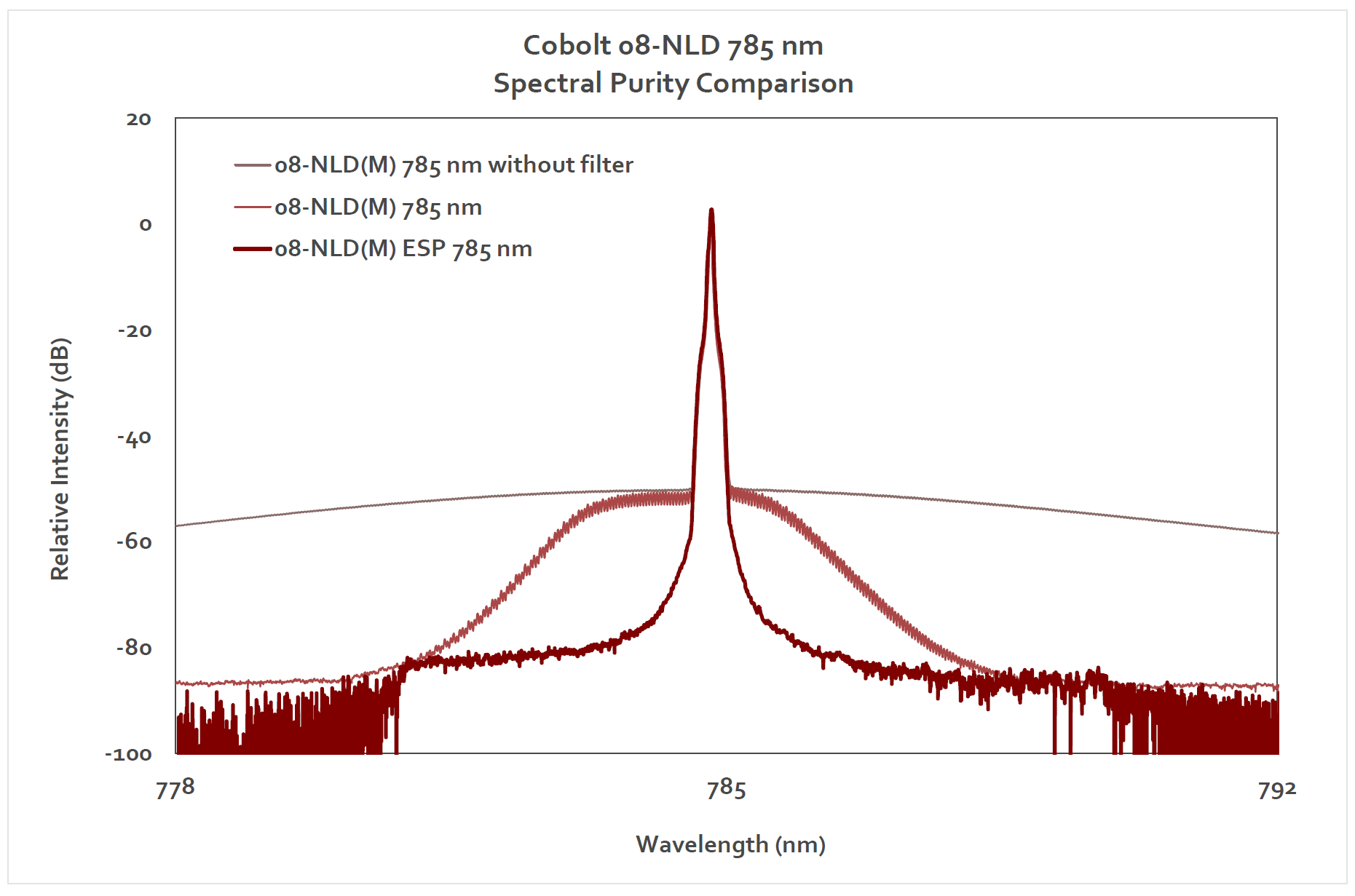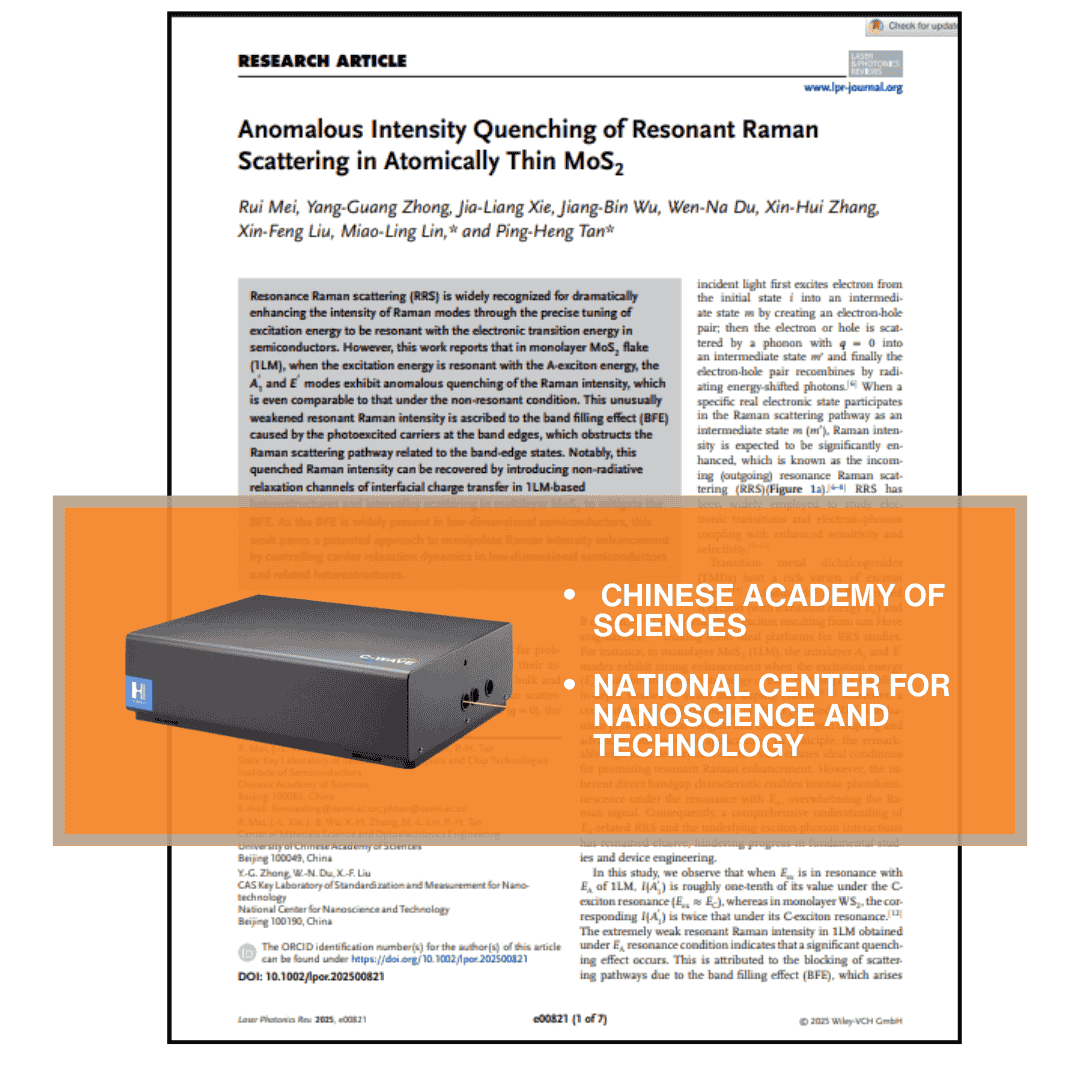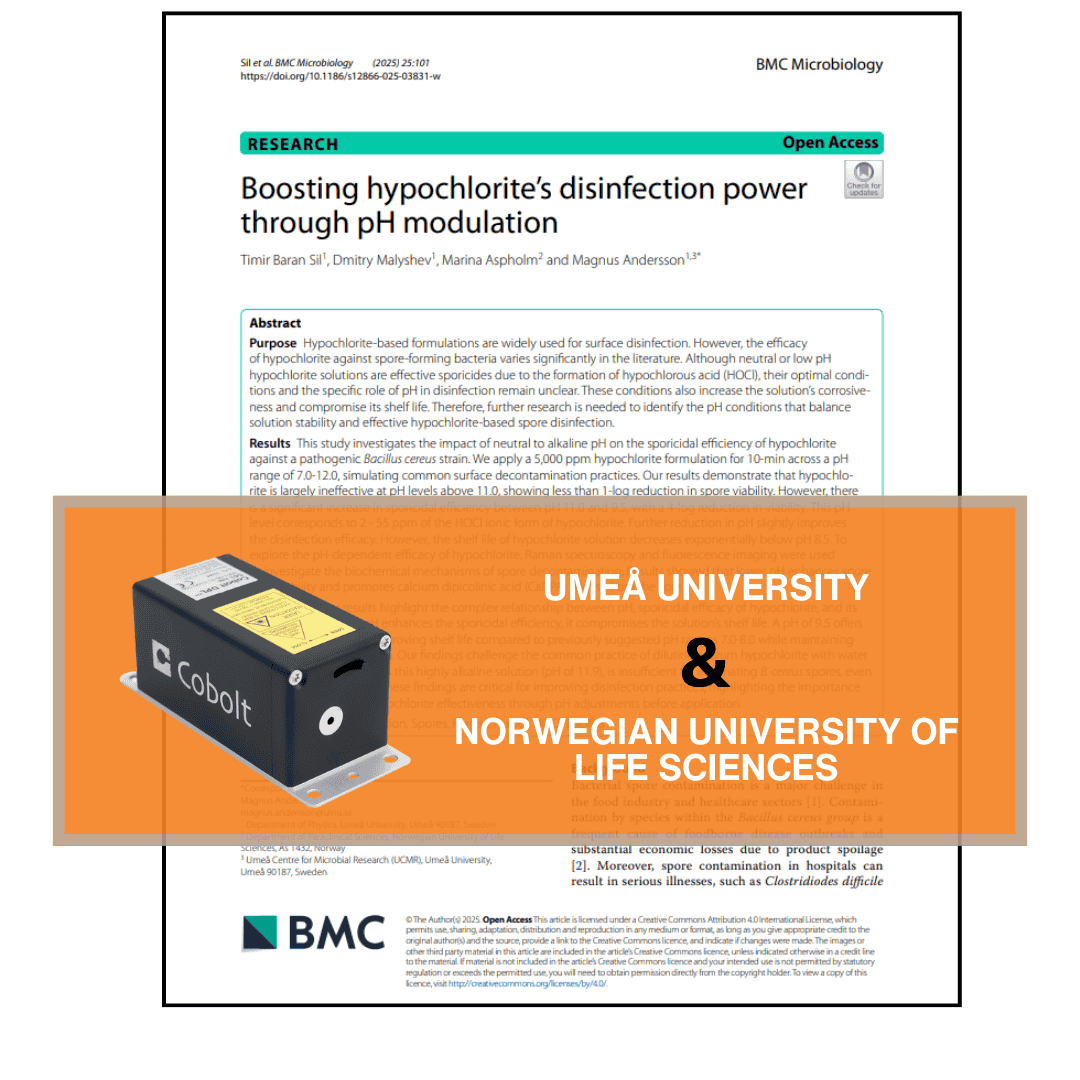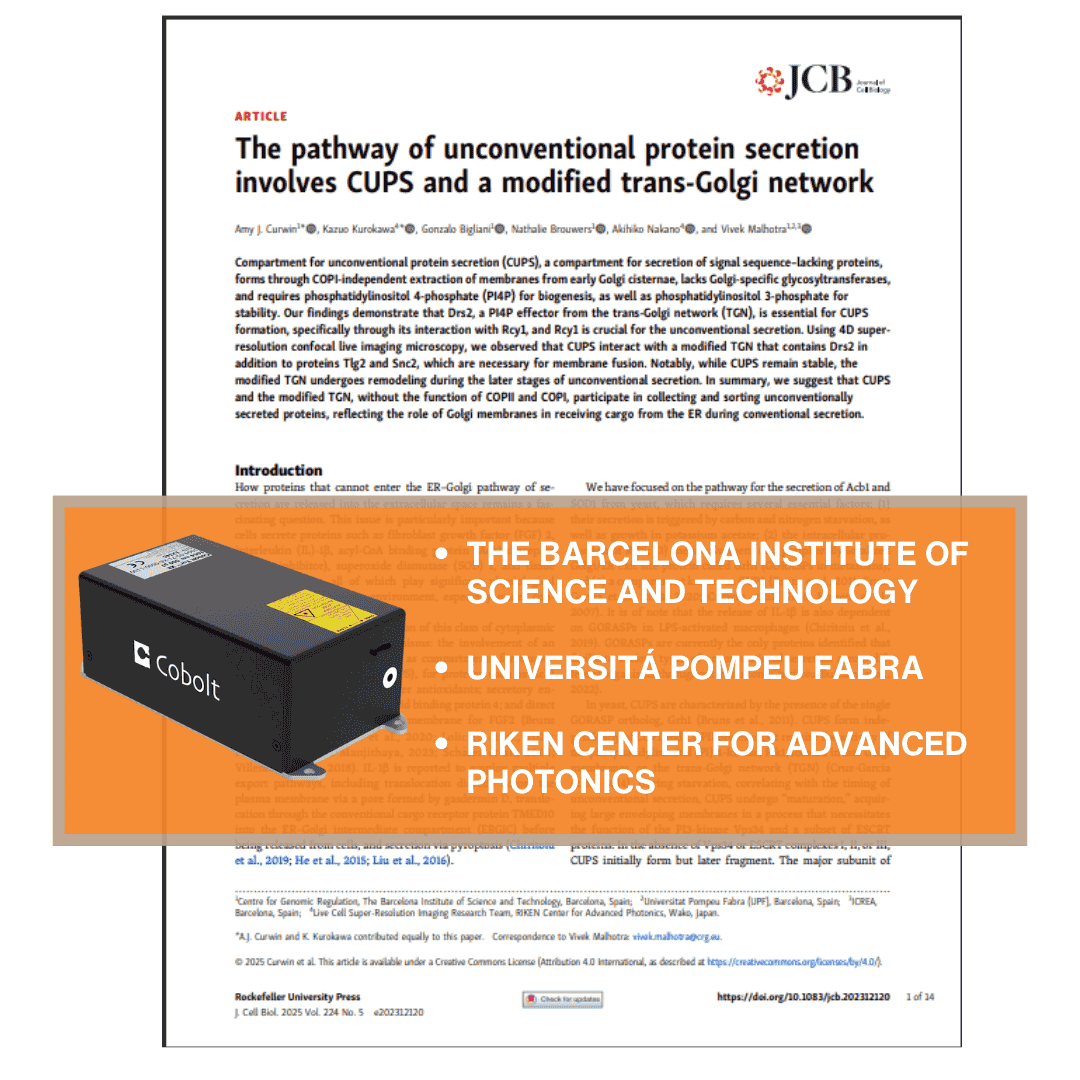24 February, 2025
Selecting a laser for Raman spectroscopy: important performance parameters to consider
Thanks to rapid technology advancements in recent years, Raman spectroscopy has become a routine, cost-efficient, and much appreciated tool for rapid and noninvasive chemical analysis, not only in material research applications but also in process control in pharmaceutical, food & beverage, chemical and agricultural industries. Improvements in lasers, detectors and spectral filters, along with developments of new schemes for signal generation and detection, have aided instrument manufacturers in overcoming the challenge of weak signals associated with Raman spectroscopy and thereby accelerated development of much smaller, user-friendly Raman instruments.
Numerous different wavelengths of light are commonly used in Raman spectroscopy, ranging from the ultraviolet (UV) through the visible, and into the near-infrared (near-IR). Choosing the best illumination wavelength for a given application is not always obvious. Many system variables must be considered to optimize a Raman spectroscopy experiment, and several of them are connected to the wavelength selection.
Why is the choice of laser wavelength important for Raman Spectroscopy?
The optimum choice of wavlength depends large on the type of material to be analyzed. To start with, the Raman signal is inherently very weak. It relies on the photon-phonon interaction in the sample material, which is typically a one-in-a-million event. In addition, the Raman scattering intensity is inversely proportional to the 4th order of the illumination wavelength, which means that illumination at longer wavelengths results in a decreased Raman signal.
The detector sensitivity is also dependent on the wavelength range. CCD‘s are commonly used for detection of the Raman signal. The quantum efficiency of these CCD devices rolls off fairly quickly beyond 800 nm. For illumination beyond 800 nm, it is possible to use InGaAs array devices, but those are associated with higher noise levels, lower sensitivity and higher cost. The wavelength dependence of the Raman signal strength and the detection sensitivity all seem to point towards the use of shorter wavelength illumination (UV and visible) as opposed to longer wavelengths (in the near-IR). However, there is still a challenge to overcome with shorter wavelength illumination: Fluorescence emission. Many materials emit fluorescence when excited with UV-visible light, which can swamp the weak Raman signal. Even so, the most commonly used wavelength in Raman spectroscopy is 785 nm. It offers the best balance between scattering efficiency, influence of fluorescence, detector efficiency and availability of cost-efficient and compact, high-quality laser sources. However, the use of visible lasers in the blue and green (in particular at 532 nm) is increasing.
Other performance characteristics to consider when choosing a laser for Raman spectroscopy experiments
In addition to wavelength, there are a number of important performance parameters that should be taken into account when choosing the best laser sources for a Raman spectrometer. We have listed 6 key performance parameters to consider.
Six important laser performance parameters
- Laser wavelength:
- The most commonly used wavelength in Raman spectroscopy is 785 nm. It offers the best balance between scattering efficiency, influence of fluorescence, detector efficiency and availability of cost-efficient and compact, high-quality laser sources. However, the use of visible lasers in the blue and green (in particular at 532 nm) is increasing. It also depends on the material under investigation.
- Spectral linewidth:
- This sets a limit to the spectral resolution of the recorded Raman signal (i.e. how small of a difference in Stokes shift can be detected). For most fixed-grating systems, the laser linewidth should be a few 10 pm or less in order to not limit the spectral resolution of the system. However, high resolution systems may require linewidths much less than that, sometimes even less than 1 MHz.
- Frequency or wavelength stability:
- The laser line must stay very fixed in wavelength during recording of the spectrogram in order not to deteriorate spectral resolution. Typically, the laser should not drift more than a few pm over time and over a temperature range of several degrees C.
- Spectral purity:
- Detecting the Raman signal normally requires a spectral purity of >60dB from the laser source (ie how well side-modes to the main laser line are suppressed). For many cases, it is sufficient if the level of spectral purity is reached at around 1-2 nm from the main peak. However, low-frequency Raman applications require a high side-mode suppression ratio (SMSR) of a few 100 pm from the main peak.
- Beam quality
- In confocal Raman imaging applications, it is necessary to use diffraction limited TEM00 beams for optimum spatial resolution. However, for probe-based quantitative Raman analysis, the requirement is not as tight. It is normally sufficient with a beam quality that allows for efficient coupling into multi-mode fibres, e.g. with 50-100 μm core diameters.
- Output power and power stability
- Typical laser output powers range from around 10 mW in the UV, up to several 100 mW in the near-IR. The output power requirement is related to the wavelength, the type of material(s) that will be investigated, as well as the sampling frequencies and imaging speeds.The output power of the laser should not fluctuate with more than a few %, also in a varying ambient temperature.
The compactness, robustness, reliability, lifetime and cost structure are also very important parameters to be considered in the selection of the optimum illumination source for a Raman system. Raman instrumentation has progressed into becoming a standard analytical tool in many scientific and industrial applications. Users expect to run routine experiments or process monitoring measurements for years without the need for service or exchange of the laser source. In a growing number of cases, the instrument must also operate in harsh, industrial environments.
For these reasons, most Raman systems nowadays are equipped with solid-state based laser sources rather than gas lasers. Today, compact solid-state lasers with proven operation lifetimes of several 10,000 hours which meet the most advanced optical performance requirements are available in all wavelength ranges commonly used for Raman spectroscopy.
The different types of laser technologies that can meet all the above mentioned requirements can be grouped into 4 categories:
- Diode-pumped lasers: SLM (single-longitudinal mode)
- Single-mode diode lasers: DFB (distributed feedback) or DBR (distributed Bragg reflection)
- Frequency stabilized or wavelength-locked diode lasers
- Tunable single frequency lasers
HÜBNER Photonics supplies laser products based on all four of these laser technologies;
- Cobolt 04-01 and 05-01 Series: High power single-frequency diode-pumped lasers 320-1064 nm up to 3W
- Cobolt 08-01 Series: Compact single-frequency diode-pumped lasers and frequency stabilized diode lasers 405-1064 nm up to 400 mW
- C-WAVE: Broadly tunable single-frequency lasers
Read the full editorial here:
Learn more watching our webinar on How to select a laser for Raman spectroscopy:
More resources
Explore our Publications for practical insights on how our customers are leveraging the power of our lasers in their projects.
Customer publications
Application: Raman spectroscopy
Product line: C-WAVE
Wavelength: Tunable
Optimizing Resonant Raman Scattering in Monolayer
Optimizing the sensitivity of Raman spectroscopy by engineering carrier relaxation dynamics to enhance Resonance Raman scattering intensity
Customer publications
Application: Raman spectroscopy
Product line: Cobolt
Wavelength: 785 nm
Tweaking Bleach’s PH Against Bacterial Spores
Scientists identify the optimal pH for hypochlorite-based sporicidal formulations that can balance solution stability and effectiveness of spore disinfection.
Customer publications
Application: Fluorescence microscopy
Product line: Cobolt
Wavelength: 473 nm, 561 nm
Cobolt Blues and Jive in Uncoventional Protein Secretion
Researchers have identified a specialized compartment called CUPS (Compartment for Unconventional Protein Secretion) that forms independently of the traditional cell pathway system






